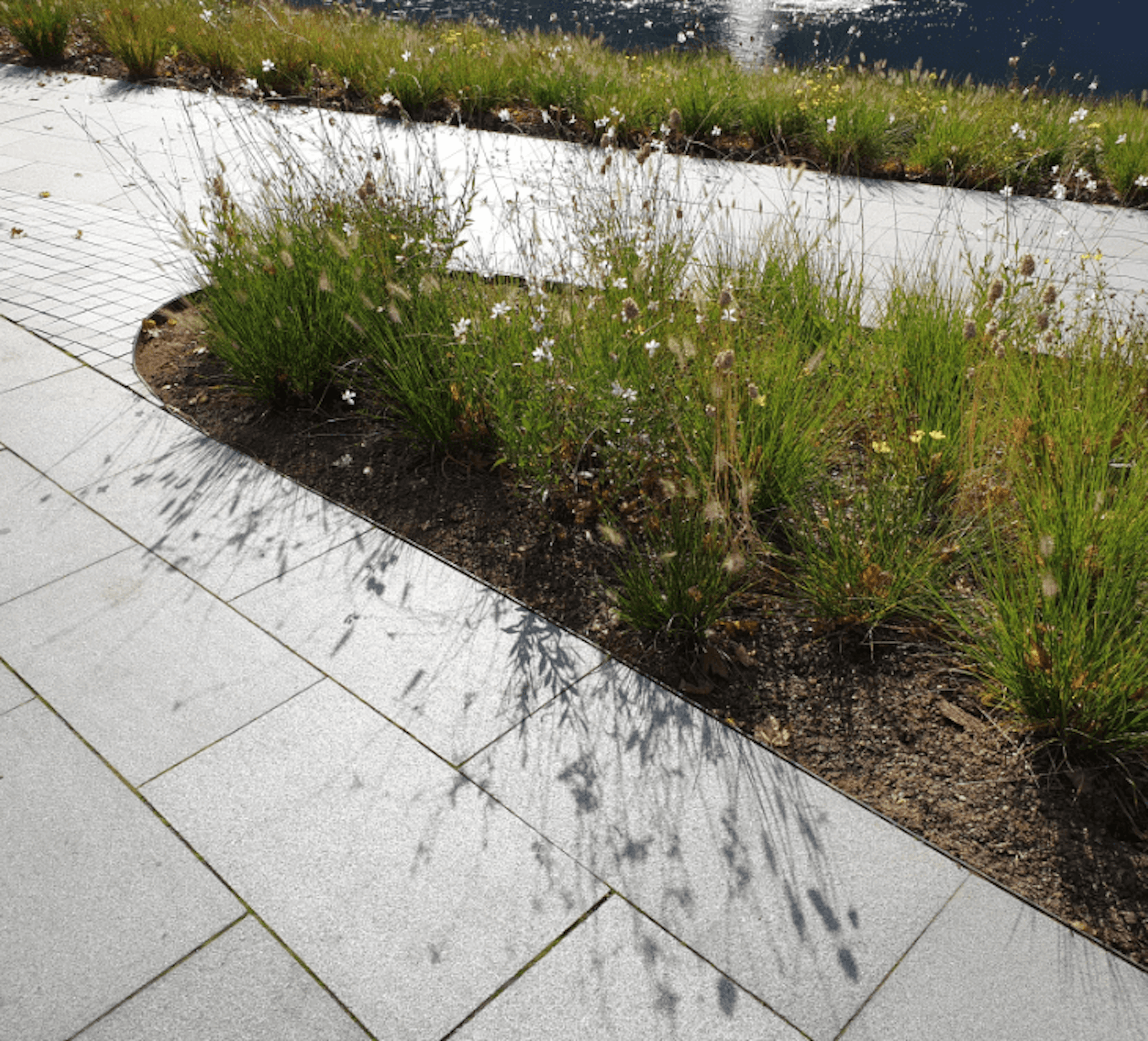The Lasting Power of Metal Landscape Edging

Whenever edging materials are being specified for a landscaped area – whether privately or publicly owned and for residential, commercial or amenity use – the question of cost is inevitably balanced against form and function. But there is yet another factor that needs to be taken into consideration and that is longevity.
However cost-effective and stylish a choice of landscape edging might be when it is first installed if it isn’t built to last it will soon lose its financial advantage and functionality. Let’s take a look at the various most commonly used landscape edging materials and see how they line up with each other. To compare the costs, we commissioned a report from landscape and external works cost consultants LandPRO Ltd.

Timber landscape edging
Used as landscape edging, timber has a lot going for it. It’s relatively cheap, quick and easy to install, plentiful and comes from easily renewable sources. Being a natural material, it also blends in nicely with natural surroundings such as lawns and flowerbeds.
On the flip side, it’s prone to warping and splintering and this can result in an unsightly and even hazardous finish. Although treated against rot, even pressure-treated timber will rot in the almost constantly damp environment of landscape edging and on average it will need to be replaced every ten years. By the time it is replaced for the first time it will already have cost slightly more than aluminium edging and on its second replacement, its total cost will be significantly higher than those of concrete and steel edging.
As timber edging starts to deteriorate it will lose its strength. Loose aggregates will spill out onto lawns and borders. Asphalt will be more prone to crumbling at the edges, allowing weeds to take root and further degrade the surface. Blocks and slabs may work loose and shift sideways. And the rotting wood will become a breeding ground for mould and fungal spores.

Aluminium landscape edging
In terms of cost, aluminium landscape edging sits above timber and below concrete and steel, becoming cheaper than timber after ten years when timber will need to be replaced. But aluminium is an extremely durable, low-maintenance material that will last as long as concrete and steel (at least 30 years) and is 100% recyclable at the end of its life.
Another advantage that aluminium has over timber is that even after many years of exposure to weather and sunlight it still looks great. Fast and easy to install with no need for foundations or haunching, it is an ideal long-term solution for light- to medium-duty soft and hard landscape edging in parks and gardens.
Concrete landscape edging
Concrete is the traditional material for heavier-duty landscape edging. Laid on a stable foundation and haunched with cement to prevent sideways shifting, it is suitable for use with any type of soft or hard landscaping including driveways, pavements and parking areas.
Concrete edging materials cost less than steel, although once the additional costs for a foundation, haunching and labour are factored in the two options are almost equal in cost.
However, concrete edging is also more susceptible to cracking, crumbling and spalling with frost or mechanical forces. If this is severe, the replacement of parts of the edging adds to the long-term overall costs.
Like aluminium and steel edging, concrete edging lasts an average of thirty years but it is manufactured from non-renewable materials that cannot be recycled and at the end of its life it can only be crushed for use as hardcore.

Steel landscape edging
The total supply and installation costs of heavy-duty steel edging are comparable to those of concrete edging and the performance is at least as good, if not better. It is much more resistant to damage than concrete and has a similar average life span of thirty years.
Like aluminium, steel is a 100% recyclable material that can be melted down and turned into new steel.
Metal landscape edging – the wise choice for long-term satisfaction
So as we can see, landscape edging materials that may seem cheaper at the outset can end up costing more in the long term and can require intermediate maintenance and replacement. Metal edging – aluminium for light- to medium-duty service in pedestrian areas and steel for heavy-duty service in areas with vehicle access – has proven to be the most cost-effective and long-lasting option.
We are a leading UK designer, innovator and manufacturer of steel and aluminium landscape edging products. For more information on our full range of products, inspiration for your future projects and technical resources to help you specify and install metal edging, email us at sales@kinley.co.uk or call 01580 830688 and speak to one of our advisors.